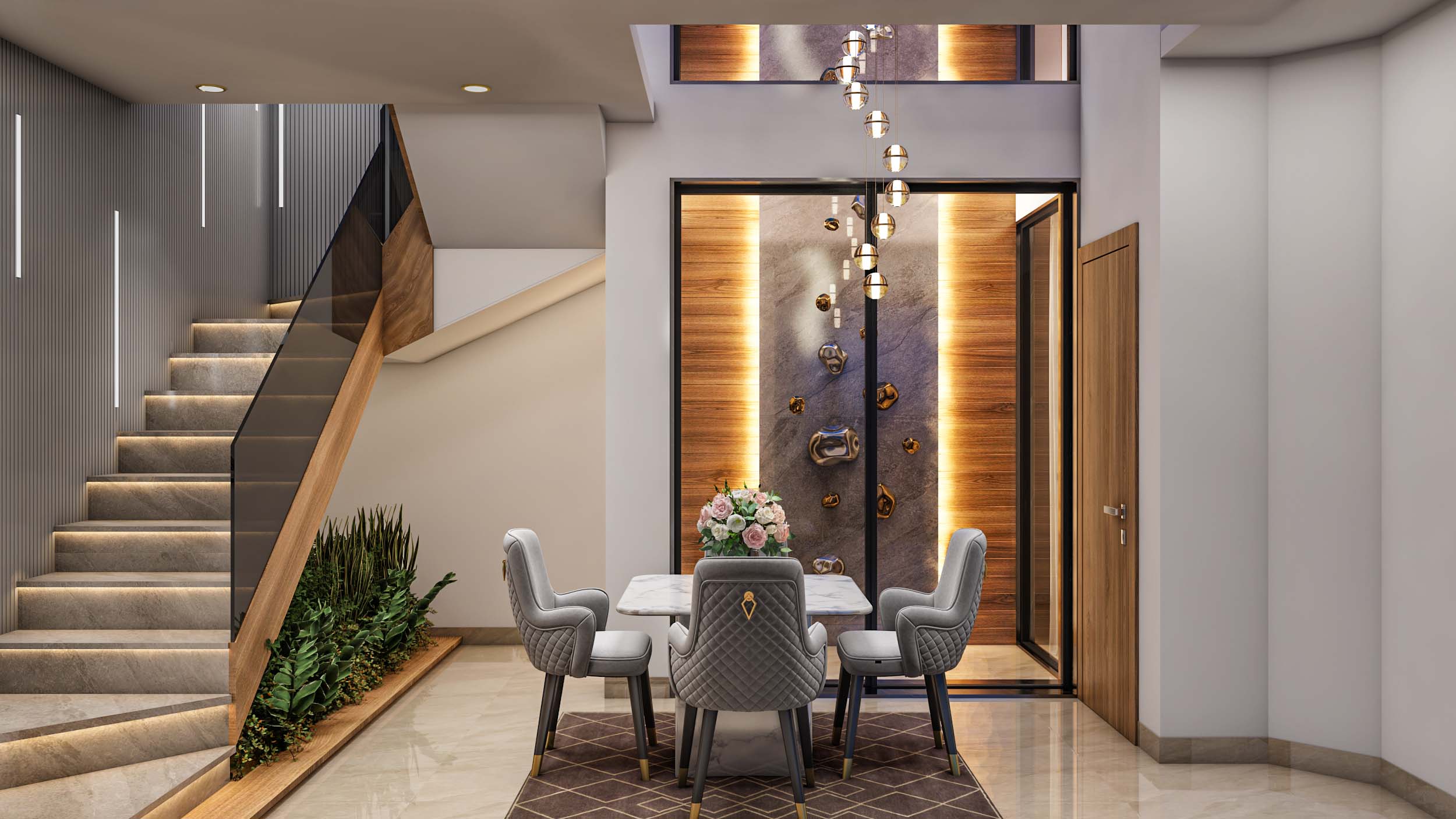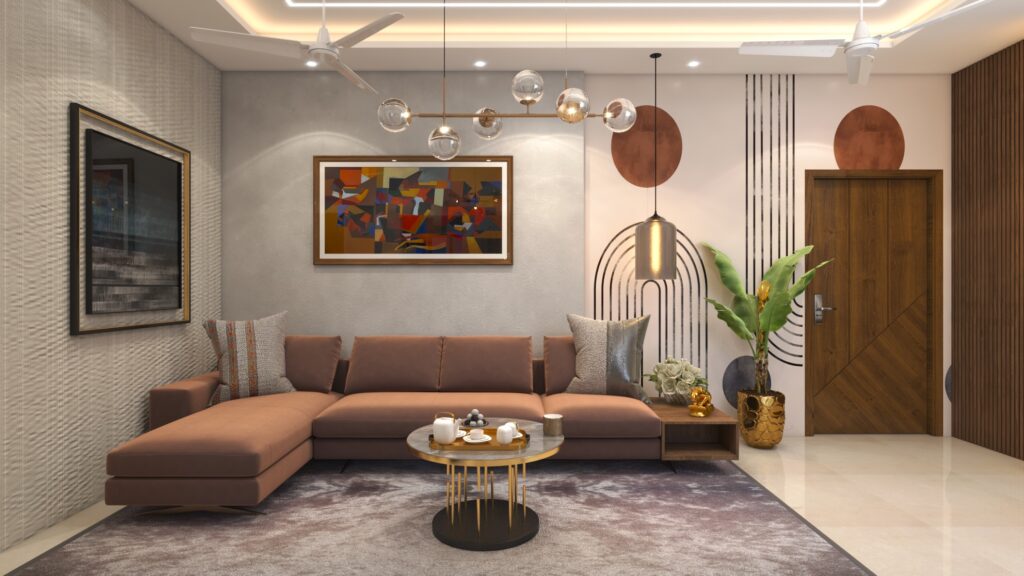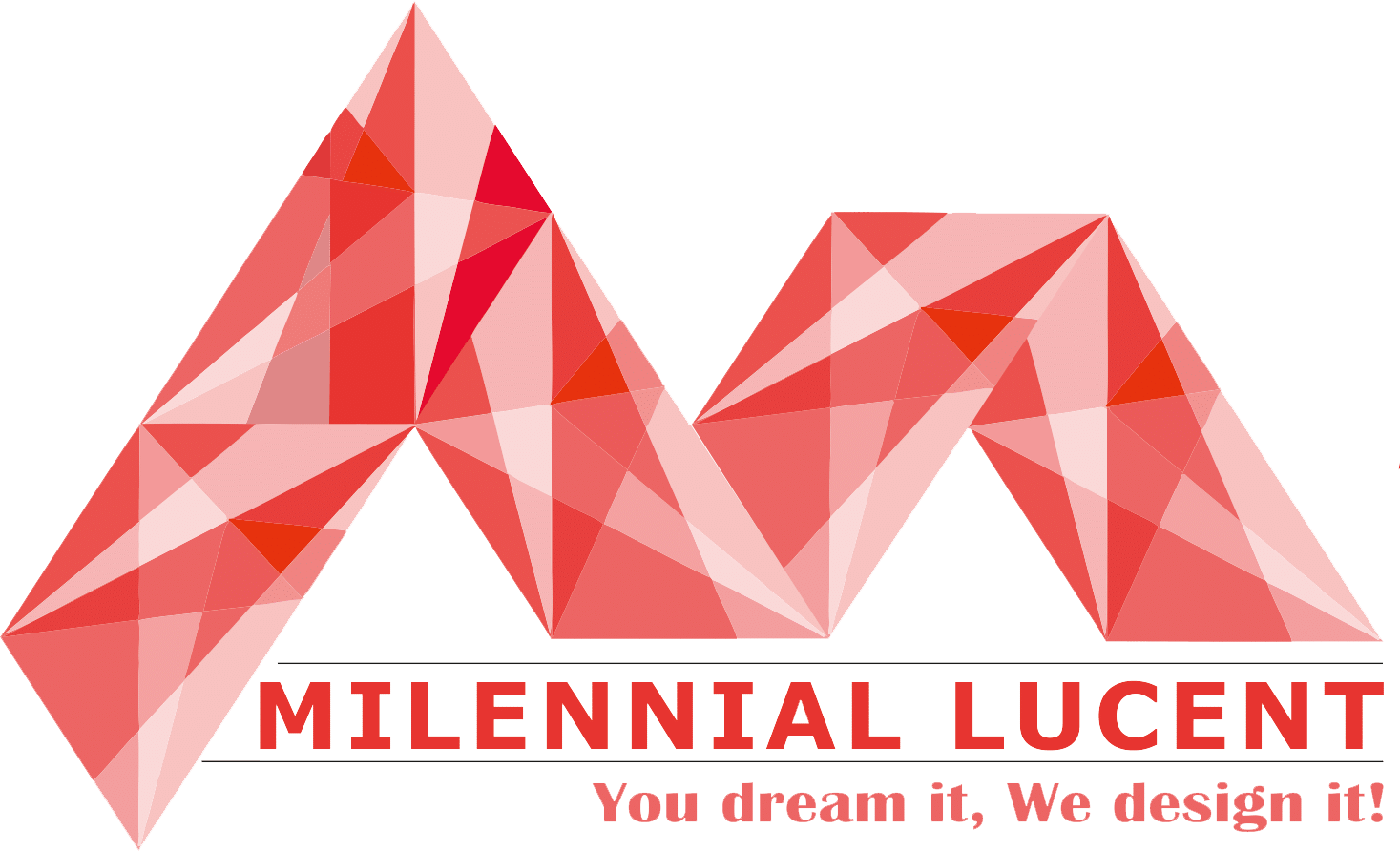your dream it , we design it.

In interior design, style refers to the distinctive manner in which a space is decorated and arranged, reflecting the preferences and personality of its inhabitants. It encompasses a variety of elements including color schemes, furniture, patterns, textures, and architectural details that come together to create a cohesive and visually appealing environment. Style serves as a framework for organizing and designing a space, whether it’s through the sleek lines of modern design, the rich textures of traditional decor, or the relaxed charm of coastal themes. By defining and adhering to a particular style, interior design can create atmospheres that are not only aesthetically pleasing but also functional and reflective of the occupants’ tastes and lifestyles.
5 Types of interior design

1.Modern Design: Modern design is characterized by its emphasis on simplicity, functionality, and clean lines. This style prioritizes minimalism, with a focus on creating uncluttered and open spaces that exude a sense of calm and order. The color palette is typically neutral, featuring shades of white, gray, and beige, often accented with bold or contrasting colors to add visual interest Furniture in modern design is sleek and streamlined, often crafted from materials like glass, metal, and wood, and designed with both form and function in mind. Decorative elements are kept to a minimum, with an emphasis on geometric shapes and subtle textures that enhance the room’s clean aesthetic. Modern design creates a sophisticated and inviting environment by combining practicality with a refined, contemporary look.
2.Traditional Design: Traditional design is characterized by its classic elegance and timeless appeal, emphasizing rich details and a sense of history. This style features a warm and inviting color palette, often including deep, muted tones like burgundy, navy, and gold. Furniture is typically ornate and crafted from high-quality woods, with intricate carvings and traditional upholstery.
Architectural elements such as crown molding, wainscoting, and detailed trim add to the room’s grandeur. Textiles play a significant role, with luxurious fabrics like silk, velvet, and brocade used for drapery, upholstery, and bedding. Patterns such as florals, damasks, and stripes are common, contributing to the room’s sophisticated and layered look. Traditional design focuses on creating a refined and harmonious space that feels both comfortable and elegant, often incorporating antiques or heirlooms to enhance its classic charm.
3.Rustic Design: Rustic design embraces a natural, earthy aesthetic that highlights the beauty of raw and unrefined materials. This style emphasizes the use of natural elements like wood, stone, and metal, often featuring reclaimed or distressed materials to create a sense of warmth and authenticity. The color palette is typically grounded in earthy tones such as browns, greens, and muted grays, which complement the natural textures of the materials used.
Furniture in rustic design is often robust and handcrafted, with a focus on functionality and durability. Textiles such as wool, burlap, and leather add warmth and texture, while patterns like plaids or checks enhance the cozy, homey feel. Architectural details like exposed beams, stone fireplaces, and rough-hewn wooden floors contribute to the rustic charm, creating a welcoming and comfortable environment that reflects a connection to the outdoors and traditional craftsmanship.
4.Mid-Century Modern Design: Mid-century modern design is distinguished by its clean lines, organic shapes, and functional elegance, reflecting the aesthetic principles of the mid-20th century. This style emphasizes simplicity and practicality, blending form and function to create a streamlined and visually appealing space. Furniture often features tapered legs and geometric forms, utilizing a mix of natural and synthetic materials like wood, leather, and fiberglass.
The color palette combines muted tones with vibrant accents, striking a balance between subtlety and dynamism. Mid-century modern interiors typically include large windows and open floor plans, fostering a seamless connection between indoor and outdoor environments. Minimal ornamentation and a focus on honest materials highlight the craftsmanship and timeless appeal of this design style, which remains both innovative and enduring.
5.Coastal Design: Coastal design captures the relaxed and breezy essence of seaside living, characterized by its light and airy aesthetic. This style uses a color palette inspired by the beach, featuring soft blues, sandy beiges, and crisp whites, which evoke the tranquility of the ocean and sky. Coastal interiors often incorporate natural materials like driftwood, rattan, and linen to enhance the connection to nature and create a casual, inviting atmosphere. Furniture tends to be simple and functional, with a focus on comfort and durability.
Textures such as woven rugs, seashell accents, and light, airy fabrics add depth and interest while maintaining a serene vibe. Large windows or glass doors are common, allowing ample natural light and offering unobstructed views of the outdoors. Coastal design aims to create a soothing and welcoming space that embodies the relaxed charm of beachside living.
6. Scandinavian Design: Scandinavian design is renowned for its simplicity, functionality, and emphasis on natural beauty. Originating from Nordic countries, this style prioritizes clean lines, minimalism, and a light, airy atmosphere. The color palette typically includes soft whites, grays, and muted pastels, creating a serene and uncluttered environment. Furniture in Scandinavian design is characterized by its functional, sleek shapes and use of natural materials such as light woods, leather, and wool.
Textures play a significant role, with cozy elements like knitted throws, sheepskin rugs, and natural fiber cushions adding warmth and comfort. The design often features an open floor plan, large windows, and a focus on maximizing natural light, contributing to the feeling of spaciousness and connection to the outdoors. Scandinavian design combines practicality with aesthetic simplicity, creating a harmonious and inviting space that reflects both modern sensibilities and a deep appreciation for nature.
Conclusion –In conclusion, Scandinavian design exemplifies a harmonious blend of simplicity, functionality, and natural elegance. By focusing on clean lines, a subdued color palette, and the use of natural materials, this style creates an inviting and serene environment.
The emphasis on practicality and comfort, combined with a connection to nature through textures and light, results in spaces that are both aesthetically pleasing and highly functional. Scandinavian design’s enduring appeal lies in its ability to merge modern sensibilities with timeless simplicity, offering a tranquil and stylish retreat that enhances everyday living.

